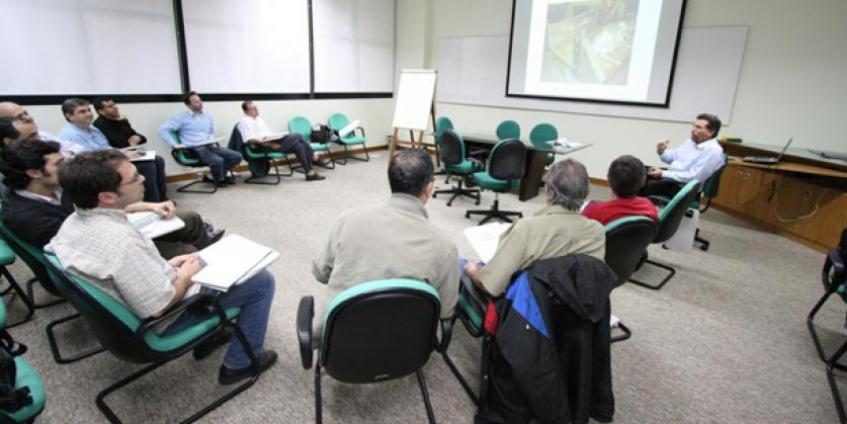This 4-day class focuses on the purpose of each test, the equipment required to perform each test, and the methodology to correctly apply the specified test environments. This class is applicable to ANY testing done to environmental test standards, including DO-160, IEC specifications, and all other documents which provide test methodology for environmental testing. The test methods explained and taught in this class apply to environmental testing of ANY equipment, whether it is intended for military/aerospace, commercial, or consumer use.
Vibration and shock methods are covered together. They overview sine and random vibration, classical waveform shock testing, drop testing, and shock response spectrum testing. We include instrumentation, vibration equipment, control systems, and fixture design.
We discuss each climatic test individually, focusing on requirements, origination, equipment, and test methodology and understanding results. Class members will tour a lab that performs the full spectrum of MIL-STG-810H tests daily. An instrumented resonant structure is excited first with slowly-sweeping sine vibration and then much faster with all-frequencies-simultaneous random vibration. Responses are compared.
500.6 Low Pressure (Altitude)
501.7 High Temperature
502.7 Low Temperature
503.7 Temperature Shock
504.3 Contamination by Fluids
505.7 Solar Radiation (Sunshine)
506.6 Rain
507.6 Humidity
508.8 Fungus
509.7 Salt Fog
510.7 Sand and Dust
511.7 Explosive Atmosphere
512.6 Immersion
513.8 Acceleration
514.8 Vibration
515.8 Acoustic Noise
516.8 Shock
517.3 Pyroshock
518.2 Acidic Atmosphere
519.8 Gunfire Shock
520.5 Combined Environments
521.4 Icing/Freezing Rain
522.4 Ballistic Shock
523.4 Vibro-Acoustic/Temperature
524.1 Freeze/Thaw
525.2 Time Waveform Replication
526.2 Rail Impact
527.2 Multi-Exciter
528.1 Mechanical Vibrations of Shipboard Equipment (Type I – Environmental and Type II – Internally Excited)
Classroom discussion is supported by projected visuals and video clips. Commencing with a review of basic vibrations, we will explore vibration measurements and analysis. We will compare sinusoidal vs. random vibration testing systems, specifications, standards, and procedures. We will emphasize vibration and shock test fixture design, fabrication, experimental evaluation, and usage and study shock measurement, shock response spectrum, and shock testing. Climatic testing will be looked at in great detail, emphasizing required equipment and instrumentation, correct interpretation of specifications, and hints to ensure that the tests are brought to a successful conclusion.
The course emphasizes topics you will use immediately. Suppliers to the military services protectively install commercial-off-the-shelf equipment in our flight and land vehicles and in shipboard locations where vibration and shock can be severe. We laboratory test the protected equipment to (1) assure 20 years’ equipment survival and possible combat and (2) meet commercial test standards, IEC documents, and military standards such as STANAG or MIL-STD-810H, DO-160, etc. Few, if any, engineering schools teach about such protection or testing. Hence, this specialized course.
Comparison of MIL-STG-810 Revisions
MIL-STG-810H is the latest revision. It has been revised roughly every 8 years since MIL-STG-810 was introduced in 1962. Some of the earlier revisions are occasionally cited in procurement contracts. Class teacher Steve Brenner mentions all the test methods in the final column of this available-for-download PDF Acrobat file. He discusses commonly specified older ones. Because few of those just entering climatic testing have seen very many (if any) climatic test chambers, Steve provides numerous pictures of general and special purpose chambers, such as solar radiation and rain. Along with “catalog photos” of chambers, he shows unpublished factory in-construction via photos of

Hosted By: Equipment Reliability Institute
Location: Location: Fullerton, CA
Information provided concerning a non-Department of Defense (DoD) website, product or services, or event does not imply or constitute DoD endorsement of any websites, products or services, or event. Any opinions, findings, conclusions, or recommendations expressed in any non-DoD material provided and/or at the event announced herein are those of the author(s) and/or presenters and does not necessarily reflect the opinions of the United States DoD

